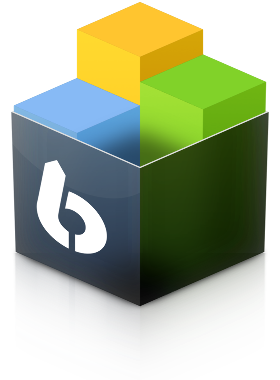

Quicksilver allows users to define "triggers," which perform a specific command (direct object/action/indirect object combination) whenever a customizable keyboard shortcut is pressed. Quicksilver uses a priority system based on prior usage to "learn" the user's habits, ultimately requiring only a few letters for the most commonly selected objects. By applying incremental search as the user types, Quicksilver predicts the filename or action typed by the user and automatically selects the object. Quicksilver is a background application that runs while the operating system is running, maintaining a "catalog" of files and objects on the user's computer. Invoked with a keyboard shortcut, Quicksilver has three panes, into which the user can enter an object, an action, and an optional attribute-analogous to creating a sentence with a subject, verb, and object. Because of its flexible interface and extensibility, Quicksilver has been called one of the top productivity applications on the Mac. It is similar to the macOS applications LaunchBar and Alfred, but uses a different interaction paradigm. Quicksilver is essentially a graphical shell for the macOS operating system, allowing users to use the keyboard to rapidly perform tasks such as launching other apps, manipulating files, or sending e-mail. Originally developed as proprietary freeware by Nicholas Jitkoff of Blacktree, Inc., it is now an open-source project hosted on GitHub. If you want a broader keyboard-driven productivity tool, I haven't found anything that beats Alfred these days.Quicksilver is a utility app for macOS. If you're going for pure launcher with a bit of system integration, LaunchBar might be better. In the end it probably matters more what you're looking for.
Alfred quicksiler launchbar how to#
I just spent 15 minutes in LaunchBar and couldn't figure out how to do it. In Alfred, I was able to figure out how to assign a global system keyboard shortcut to trigger a workflow. Some things are also more or less intuitive in different apps. Once you find the ones that work for you, there's nothing out there that can execute them with quite as much fluidity as Alfred. I've made workflows that are as simple as file actions to quickly send a file to an app to full-fledged mini-apps that query APIs, process data, return an array of actionable responses, and then can produce multiple forms of output. But there's such power and flexibility in them that once you get in there and start making some for your workflows, the power is fantastic. It's hard to just "sample a bunch" because you'll forget how to invoke them. I think one of the biggest challenges with Workflows are, however, what you said. Its file buffer is easy to use, it has a "good enough for 95% of people" text snippet module with variables, its mini-player for music is good for quick commands, and the real guts of it, Workflows, are amazing. It's fast, which is good, but it doesn't index Spotlight metadata and for simple operations can suffer from some of what you mention.īut it can do so much more, and a lot of it is more intuitive than I've found in other applications. But for me, the raw power of Alfred more than makes up for it.Īs purely a launcher, Alfred is okay. I do think that for some operations, how you describe is more intuitive. I think that ultimately it's down to how your brain works. I know Alfred is immensively popular, so I'm asking myself whether I'm the only one having a big gripe about this behaviour. Then I press Tab and get to set the verb: "Remind me to ", "Send as e-mail", "Send as sms", "Google ". Quicksilver and Launchbar both get this right, allowing workflows to start by typing the object: "Buy Milk". Was it "Remind "? "Note "? "Create "? "Remember "?). Alfred interrupts this process by forcing me to first recall the specific command that I want to execute on the thought I'm forming. When I get a thought that I want put into words ("Buy milk"). Hoping for some good input, I want to verbalise where I think Alfred goes wrong: I did my master's thesis on cognition and how user interfaces affect working memory. Installed, got disappointed, installed Quicksilver, got disappointed and installed Launchbar, which turned out to be only half a dissapointment. Some quick research dubbed Alfred the new kid on the block.


I still miss the workflow part and thought I'd look into today's alternatives. I'm installing my new MacBook and came to think of Quicksilver - a workhorse some 15 years ago, sent away once Spotlight entered into my life.


 0 kommentar(er)
0 kommentar(er)
